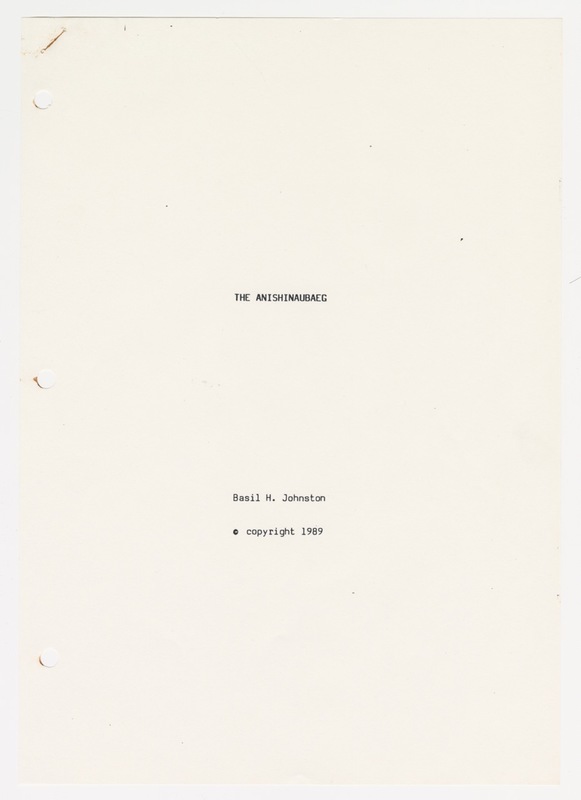Boozhoo Aniin / Welcome
Basil Johnston was an Anishinaabe historian and educator who was born in Wasauksing First Nation (Parry Island First Nation), which is part of the Robinson-Huron Treaty. A member of the Chippwas of Nawash Unceded First Nation Band (Cape Croker Band), Basil Johnston was raised within his home until attending residential school at the St. Peter Claver School for Boys, better known as the “Spanish School,” in 1939; some of his youthful experiences and memories are recounted within his book “Indian School Days”.
Basil Johnston went on to pursue higher education after his time at Spanish Indian Residential School, and in 1954 graduated with a Bachelor of Arts (Honors) from Loyola College in Scarborough, Ontario. Basil Johnston expressed the importance of education and understanding where one comes from as an Anishinaabeg person. In his thoughts and writings on education, he especially emphasizes the importance of language and how language creates a sense of connection within Anishinaabeg culture. Language is a door of opportunity for the current and future generations.
Within the written works of Basil Johnston, there are many tales and stories that gift an understanding and insight into the history of the Anishinaabe peoples and the territories they occupy. Storytelling is a form of kinship and relationality, allowing us to connect to, and realize our interconnectness with, those who have come to walk before us on Turtle Island.
This exhibit is woven around the framework of the Seven Sacred Teachings of the Anishinaabe; these provide the foundation for the tales, understandings, and teachings of Basil Johnston’s work. The Seven Sacred Teachings are a foundation of the laws which guide us within the life cycle of the Anishinaabeg. The Teachings are each represented by a messenger sent by the Creator to Mother Earth in order to give assistance to Anishinaabeg peoples on their everyday journey. These messengers teach, and represent, the qualities of Respect, Love, Truth, Courage, Honesty, Wisdom, and Humility. The Seven Sacred Teachings are a gift of embodiment, providing a spiritual connection of knowledge and guidance to Anishinaabe people. The Seven Sacred Teachings bring a sense of fulfillment and speak to universal human aspirations, emphasizing the relationality of Anishinaabeg traditions and culture.
Within this exhibit, for each of the Seven Sacred Teachings, four items have been selected which speak to each Teaching. The number four represents the Medicine Wheel, Four Directions, Four Colours, Four Seasons, Four Sacred Medicines, Four Nations, Four Stages of Life, and the Four Elements within Turtle Island. As Indigenous peoples of Turtle Island, the number four is significant because it represents the core of our understandings of the world around us. Chi-Miigwetch.
